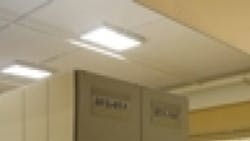The one facility at school and university campuses guaranteed to be used by most everyone every day is the public restroom — a hub for germs and dirt.
Nearly 20 percent of the nation visits school buildings, and a further 5 percent attend universities across the country, according to enrollment figures from the U.S. Census Bureau. With such a high-traffic revolving door of people, a poorly kept bathroom can be the source of vociferous complaints.
Applicants and their parents; visiting faculty and speakers; teachers and students — the variety of people who pass through a restroom and pass judgment is considerable. The impact is considerable too, because a visitor's impressions are formed by a variety of factors, including facilities.
Green has become a goal for many organizations. Given the volume of cleaning products that are used in schools each year, using naturally derived cleaners is one way to make real progress toward a school's environmental goals. But schools have concerns: Are green cleaners affordable, and are they effective for restroom use? How can custodial staff kill germs and use green cleaners at the same time?
Why use green?
When it comes to restrooms, frequent and effective cleaning can go unnoticed. But because education facilities have some of the most densely populated buildings in the country, an inadequately maintained restroom is another matter.
A simple way to improve how public restrooms are perceived is by using a cleaning protocol that incorporates green cleaners — it will eliminate grime and provide other important benefits, including:
•Reduced impact on indoor air quality (IAQ). Naturally derived cleaners are effective, have no harsh chemicals or fumes that may be overwhelming, and leave behind a fresh scent. According to the U.S. Environmental Protection Agency, IAQ is critical to providing a healthful and comfortable learning environment; it affects health, productivity, performance and comfort. Improving IAQ in schools can help reduce absenteeism, improve the ability of students and staff to concentrate and perform, and diminish the health risks that arise from exposure to indoor pollutants.
•Custodial benefits. Cleaning products are used on almost every inch of a restroom; custodians will appreciate having improved control of chemical inventory and storage locations, and having fewer chemicals in water waste.
Many states provide green cleaning guidelines, but as more research demonstrates a link between IAQ and student and staff health, an increasing number of states are passing green cleaning legislation for schools — it is time for schools and universities to get on board.
Effectiveness and disinfection
How can custodial staff kill germs and disinfect in restrooms while minimizing the use of chemicals? Consider green cleaners as one component of a two-step process that involves disinfection followed by cleaning:
•Step one: Use chemical cleaners where disinfection is necessary. Some buildings may have other issues involving rodents, mold and bacteria; every restroom has trouble spots where disinfection is a necessity, so using traditional cleaners to disinfect is important.
•Step two: Use naturally derived products where possible. There are a variety of surfaces in which green cleaners, formulated to clean tough stains like soap scum, will perform just as well as traditional cleaners. Examples include countertops, sinks, bathtubs, basins, toilet bowls and shower room walls.
Another component to minimize germs and bacteria without using chemicals is to find ways to encourage people to be more sanitary, such as replacing paper towel dispensers with air dryers or motion-activated paper towel dispensers. Or, install hand sanitizers to help stop germs from spreading.
Saving money
Are green cleaners affordable and effective in washrooms? It's a misconception that they are more expensive than traditional cleaners; the reality is they can be just as cost-effective.
The switch to using natural cleaners in restrooms has resulted in big savings for education facilities. For example, according to Environmental Working Group (www.ewg.org):
•Two schools in Hawaii reduced the cost of their restroom cleaning products to less than $1 per gallon (it had been $6 to $12 per gallon) by replacing a ready-to-use conventional product with a green concentrate.
•The Fairfield-Suisun (Calif.) Unified District has seen a 20 percent savings because of "labor savings from using restroom cleaning machines and autoscrubbers that dispense new green cleaning products."
Trials are the most straightforward way to learn what works for a campus or school. Increase the use of naturally derived products in restrooms and monitor feedback, remembering that silence often indicates success. Once an institution has managed to increase the use of green cleaners, it should roll out the program to other areas of the facility.
Kramer is the marketing manager of Green Works Commercial Solutions, a 95 to 99 percent natural line of commercial cleaning products by The Clorox Company, Oakland, Calif., that is made with plant and mineral-based cleaning ingredients. She can be reached at [email protected].
